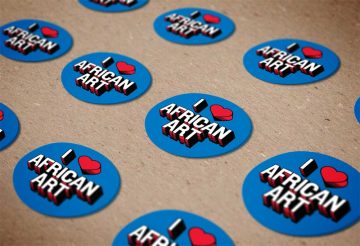Exhibition Preserves Important Historical Record of Benin Arts and Culture
“Chief S.O. Alonge: Photographer to the Royal Court of Benin, Nigeria,” opens at the Smithsonian’s National Museum of African Art, Wednesday, Sept. 17, and will remain on display until Sept. 13, 2015. The retrospective exhibition showcases the work of noted Nigerian photographer Chief S.O. Alonge, the first indigenous photographer of the Royal Court of Benin, in conjunction with royal arts from the Benin kingdom.
The collection of historic photographs was captured on Kodak glass-plate negatives and documents more than 50 years of the ritual, pageantry and regalia of the obas (kings), their wives and retainers. Alonge’s photographs reveal an unique insider’s view of the Benin royal family and court ceremonies, including historic visits by Queen Elizabeth (1956), foreign dignitaries, traditional rulers, political leaders and celebrities. The collection preserves an important historical record of Benin arts and culture during the periods of British colonial rule and the transition to Nigerian independence during the 1950s and 1960s. As Nigerians celebrate 100 years as a united country (1914–2014), this exhibition celebrates the role Nigerian photographers have played in documenting their own history and addressing issues of identity, nationhood and memory.
Curated by Amy Staples, the museum’s senior archivist, “Chief S.O. Alonge: Photographer to the Royal Court of Benin, Nigeria” represents a unique collection of archival photographs documenting the traditional arts and culture of the Benin kingdom.
“Through his portrait photography in the Ideal Photo Studio, Alonge provided local residents—many for the first time—with the opportunity to represent themselves to themselves as dignified African subjects,” said Staples. “His portraits of an emerging elite society in Benin City not only illustrate the cosmopolitan and modernizing influences of the 20th-century in Nigeria, they preserve the social history of Benin and its traditional leaders for future research and educational programs at the National Museum of African Art.”
About the Photographer
Solomon Osagie Alonge learned the craft of photography as a youth in Lagos during the 1920s and saw himself and his profession as an honorable and distinguished calling. He demonstrated an inclusive documentary perspective in his efforts to photograph many aspects of the world around him. In 1942, Alonge established the Ideal Photography Studio in Benin City and documented colonial society, the establishment of churches and businesses, and the formation of new civic organizations, athletic clubs and social groups like the Benin Social Club. As a commercial photographer, Alonge photographed individual and group portraits, preserving a visual record of the everyday lives and peoples of Benin City. Alonge’s studio portraits illustrate how local Bini residents presented themselves to the camera and engaged with the practice of photography during the early-to-mid-20th century.
Film program: U.S. Premiere of Invasion 1897
Nollywood filmmaker Lancelot Imasuen will premiere Invasion 1897 in the Meyer Auditorium of the Smithsonian’s Freer and Sackler galleries Wednesday, Sept. 17, from 7:30 p.m. to 10 p.m. to coincide with the “Chief S.O. Alonge” opening. This historic epic is based on the invasion of the Benin kingdom by the British in 1897 and the removal of Benin arts and artifacts from the royal palace. A discussion with the filmmaker and Mbye Cham of Howard University will take place after the screening.
Gallery Tours for “Chief S.O. Alonge: Photographer to the Royal Court of Benin, Nigeria”
On Saturday, Sept. 20, at 2 p.m. in the museum’s mezzanine-level gallery, co-curators Staples and Bryna Freyer will lead a tour to explore Alonge’s work; the event is free and opens to the public, but space is limited.
Support
Major sponsorship for “Chief S.O. Alonge: Photographer to the Royal Court of Benin, Nigeria” provided by THISDAY Arise TV and Captain Idahosa Wells Okunbo, Ocean Marine Security Ltd. Additional support received from Godwin Obaseki, Gregory Ibe and Paul Sack.
About the National Museum of African Art
The National Museum of African Art is the nation’s premier museum dedicated exclusively to the collection, conservation, study and exhibition of Africa’s traditional and contemporary arts. The museum is open daily from 10 a.m. to 5:30 p.m. (closed Dec. 25). Admission is free. The museum is located at 950 Independence Avenue S.W., near the Smithsonian Metrorail station on the Blue and Orange lines. For more information, call (202) 633-4600 or visit the National Museum of African Art’s website. For general Smithsonian information, call (202) 633-1000.
Note to Editors: Photos from “Chief S.O. Alonge: Photographer to the Royal Court of Benin, Nigeria” may be downloaded by visiting the museum’s media website at africa.si.edu and clicking on “press room.” To arrange an interview with the curators contact Eddie Burke at (202) 633-4660 or burkee@si.edu.
Media website: http://newsdesk.si.edu
Media preview: Tuesday, Sept. 16; 9:30–11:30 a.m. The media tour will take place in the mezzanine-level gallery.
